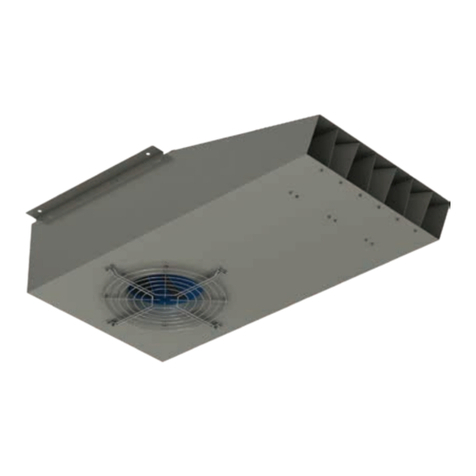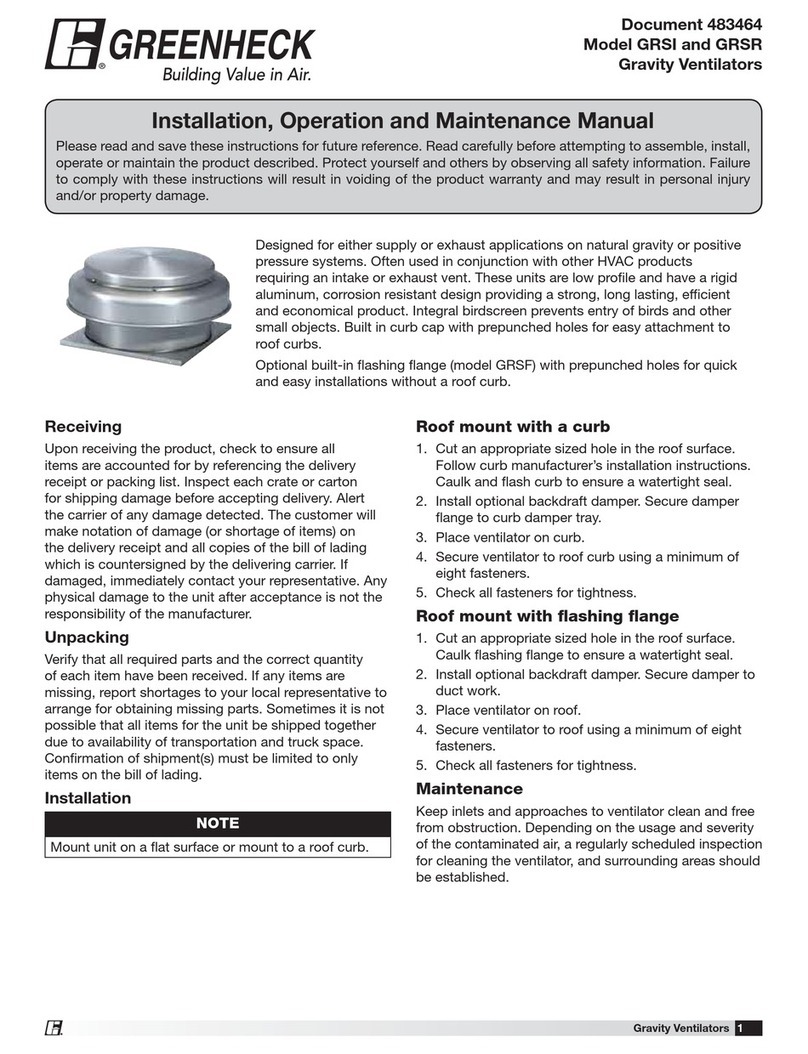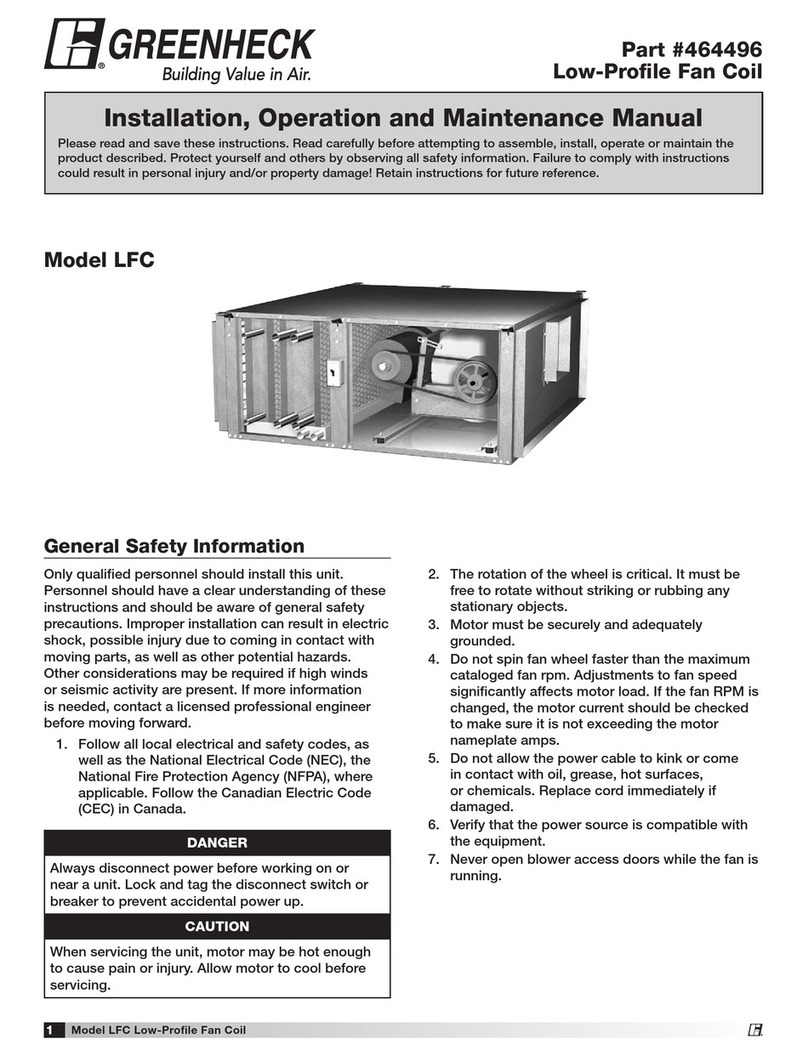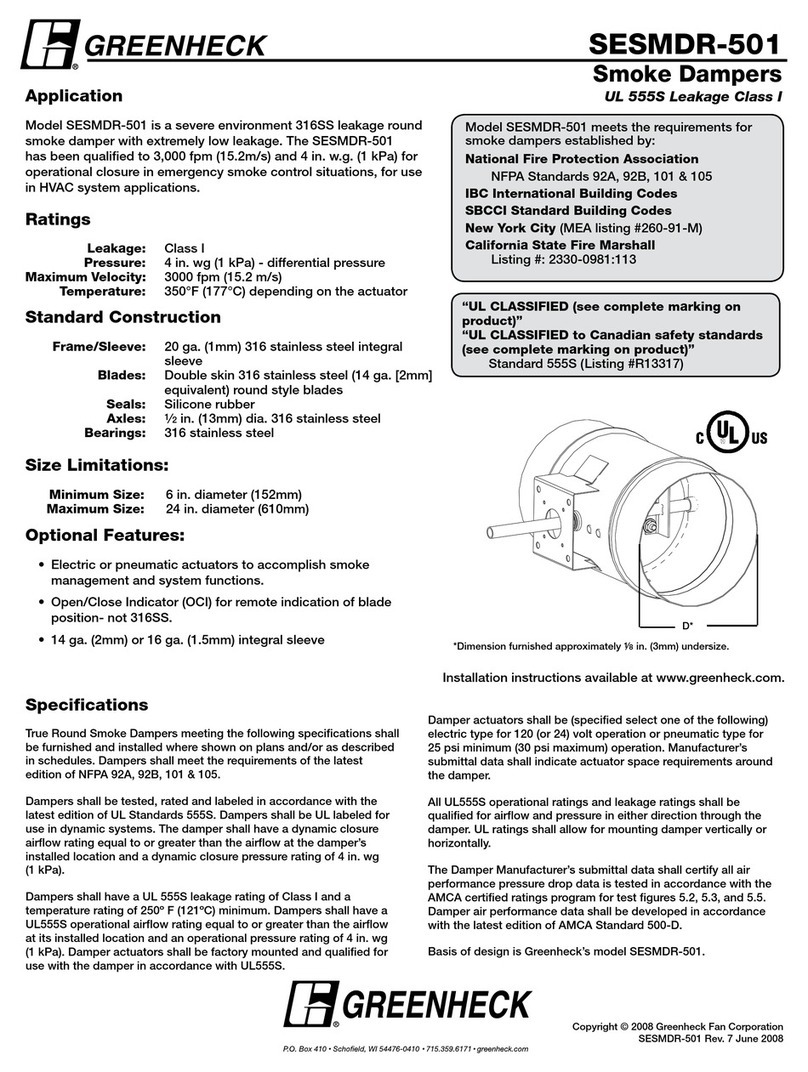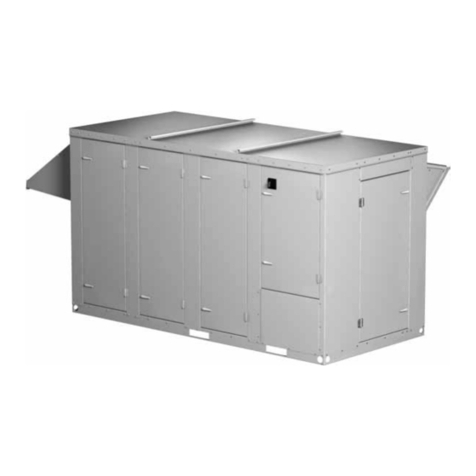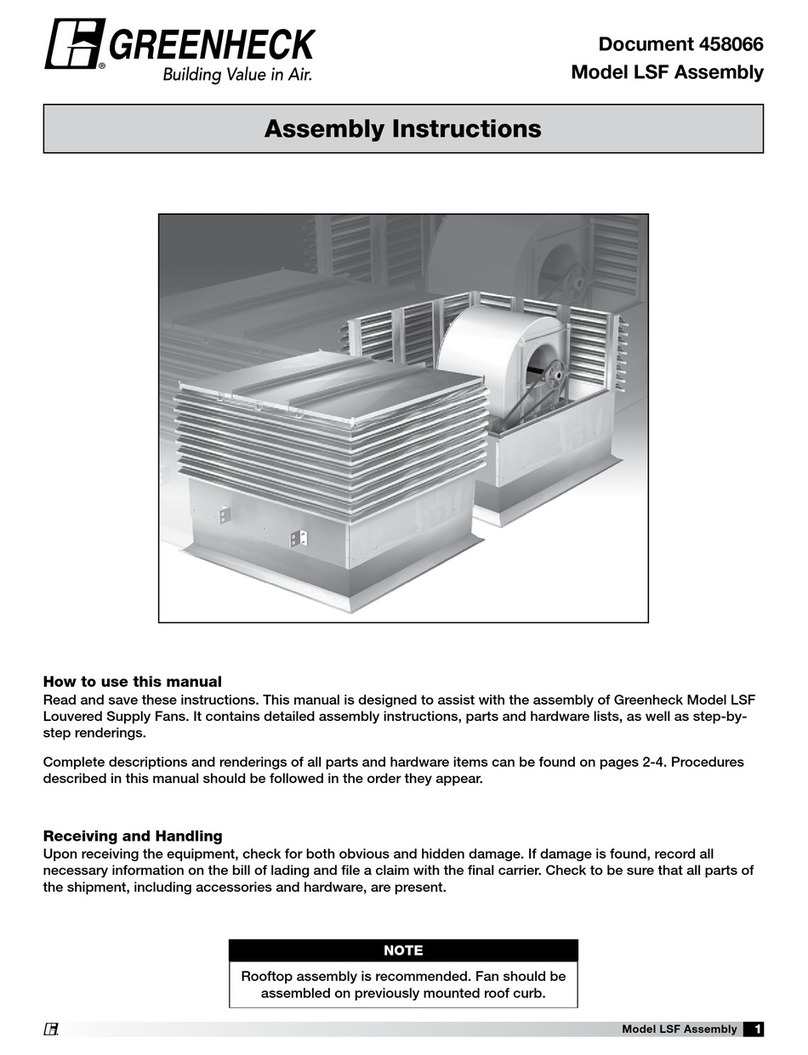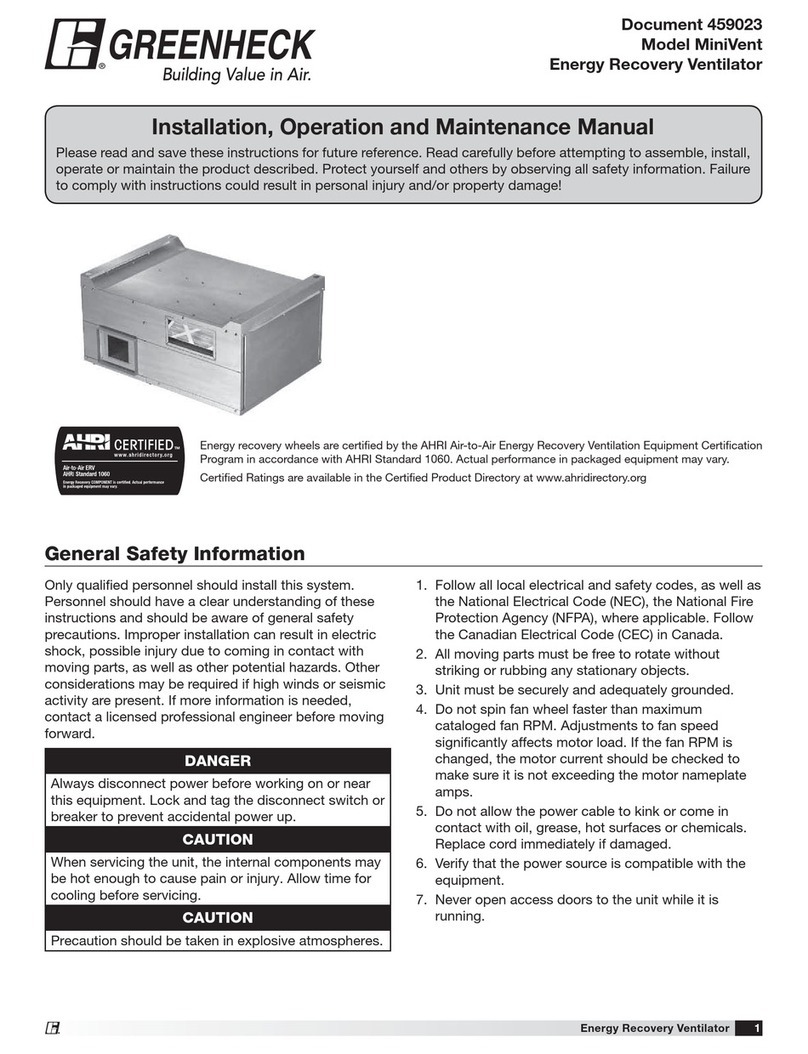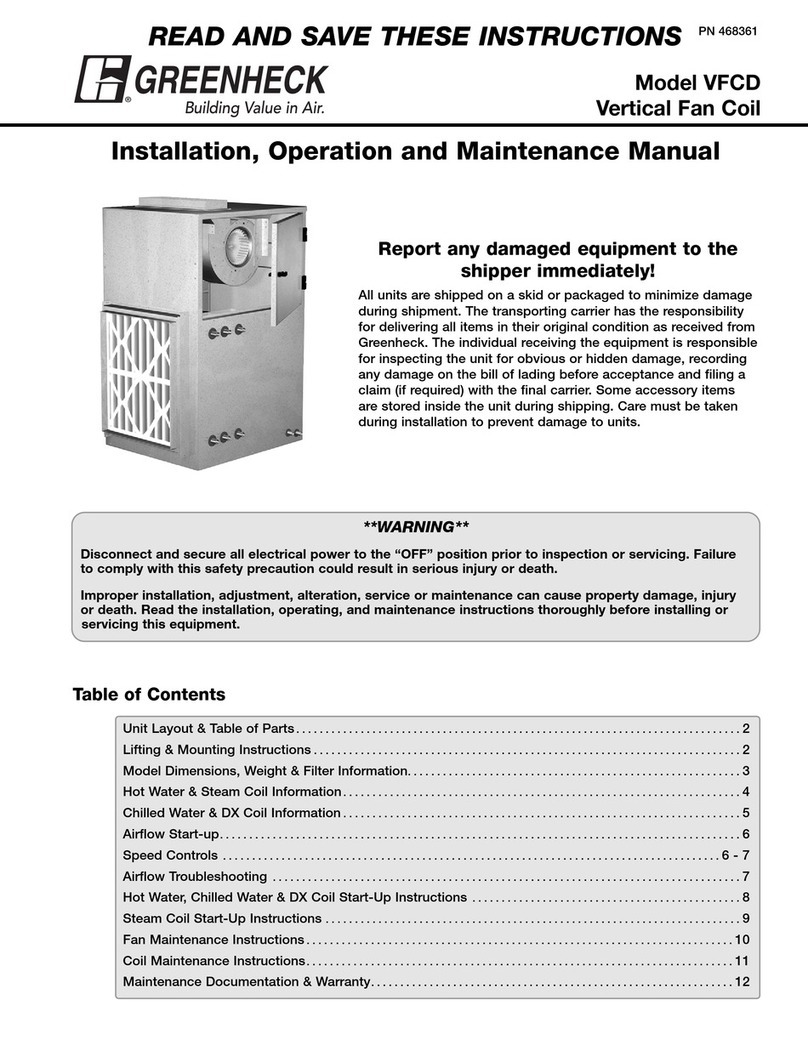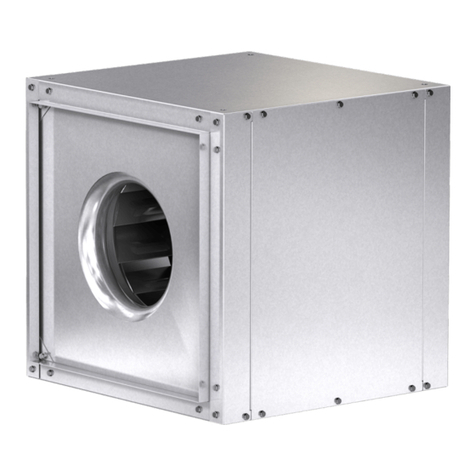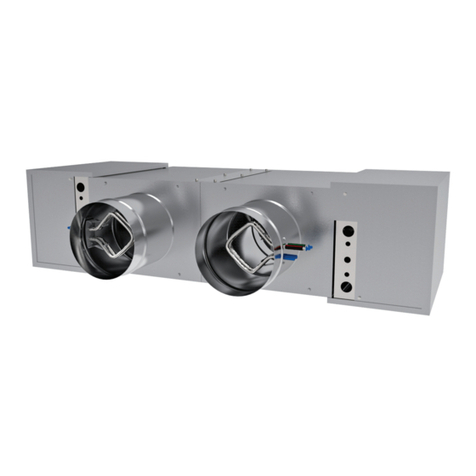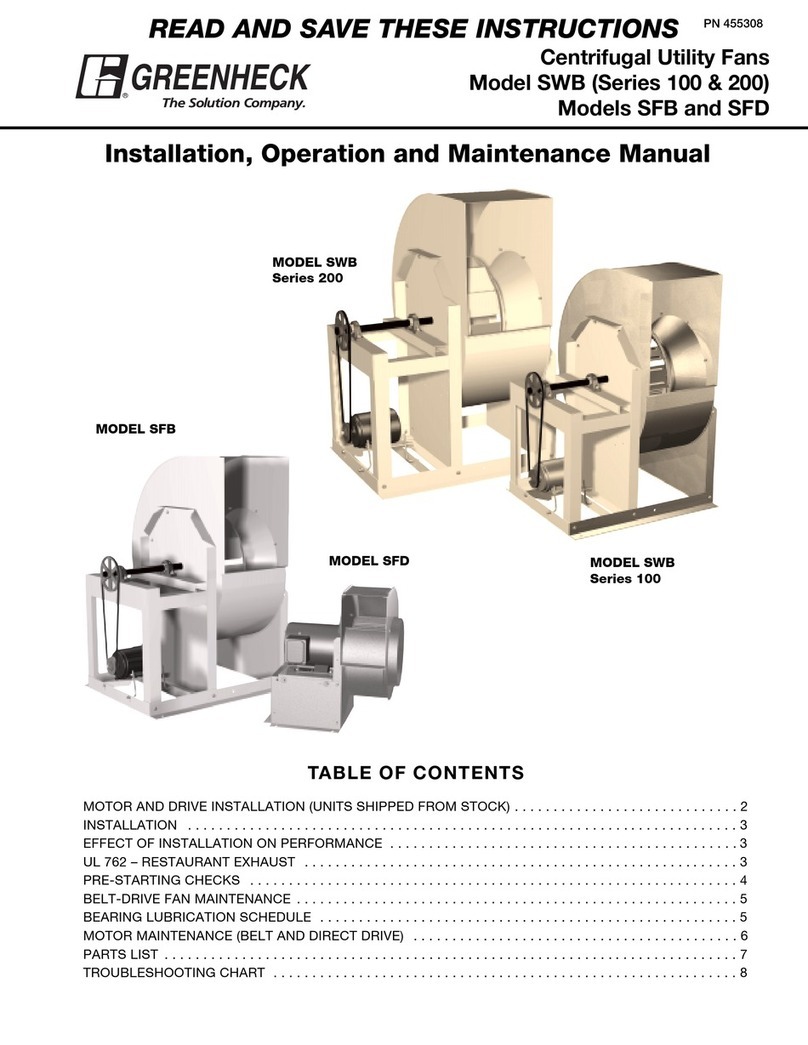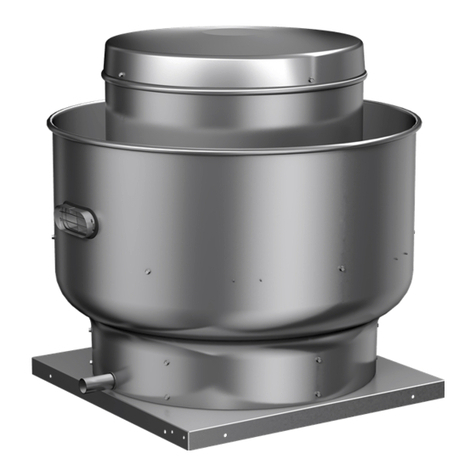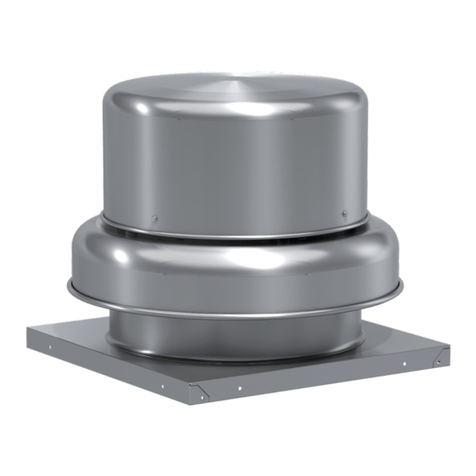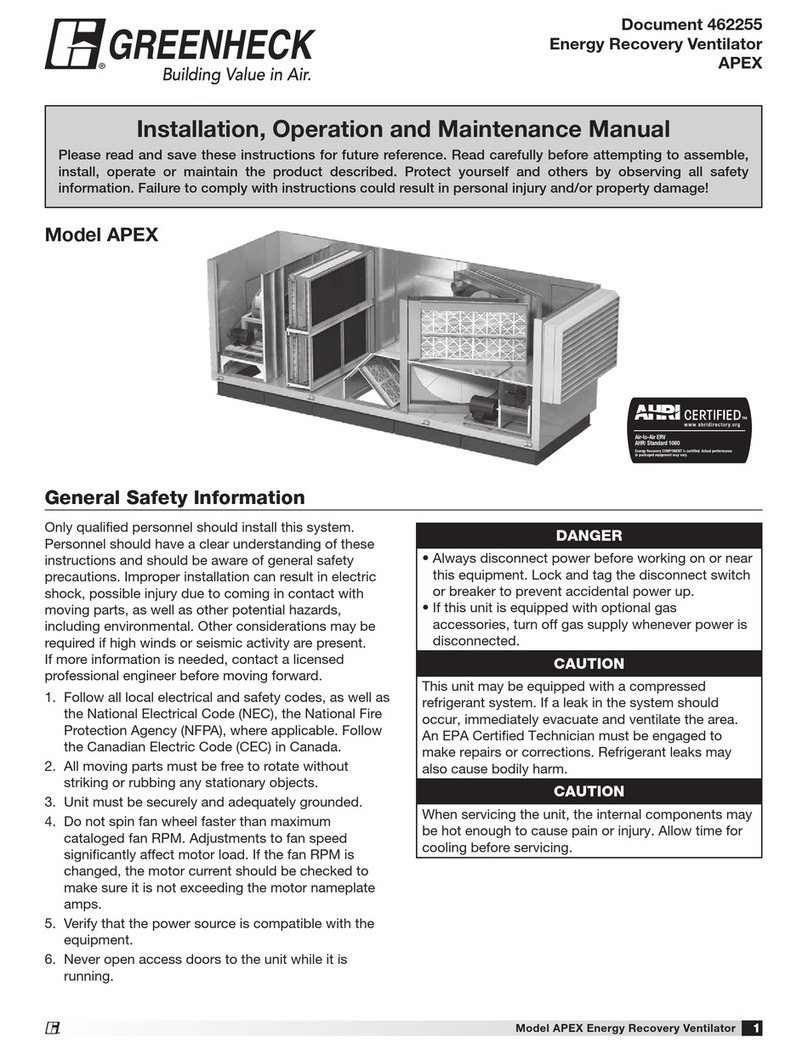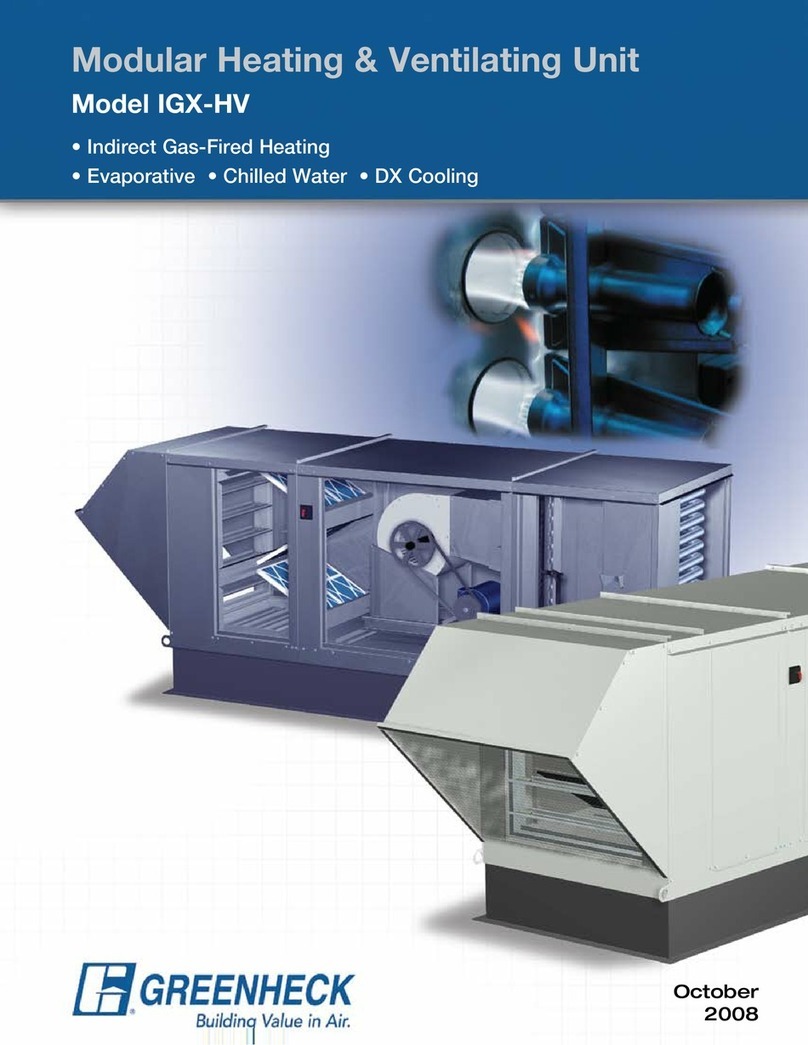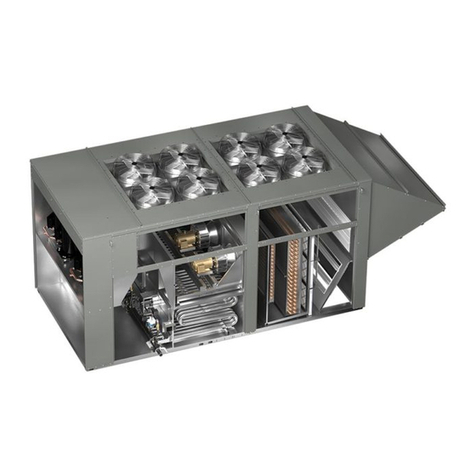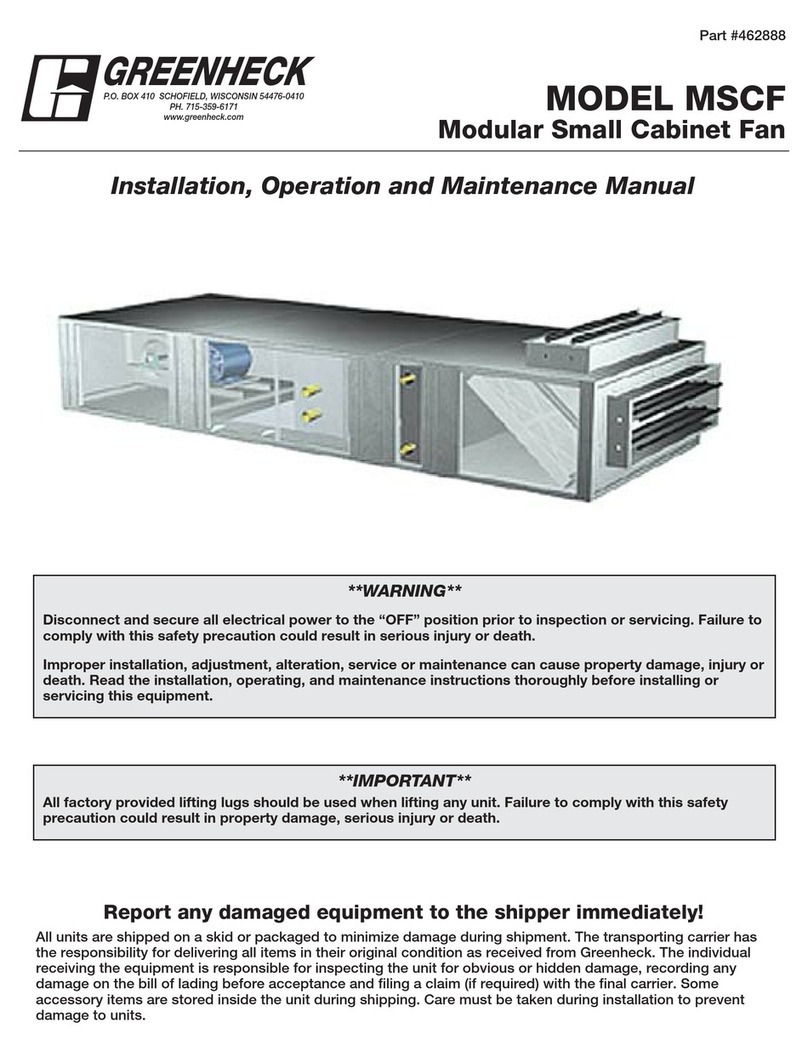3
PRE-STARTING CHECKS
Note: For units shipped with motor and drives separate, refer to the Motor Mounting Instructions included in the
hardware bag.
★★★★★★★★★★★★★★★★★★★★★★★★★★★★★★★★★★★★★★★★★★★★★★★★★★★★★★★★★★★★★★★★★★★★★★★★★★★★★★★★
WARNING
DISCONNECT AND SECURE TO THE “OFF” POSITION ALL ELECTRICAL POWER TO THE FAN PRIOR TO INSPECTION OR
SERVICING. FAILURE TO COMPLY WITH THIS SAFETY PRECAUTION COULD RESULT IN SERIOUS INJURY OR DEATH.
★★★★★★★★★★★★★★★★★★★★★★★★★★★★★★★★★★★★★★★★★★★★★★★★★★★★★★★★★★★★★★★★★★★★★★★★★★★★★★★★
Check all fasteners and set screws for tightness.
Rotate the fan wheel by hand to assure it turns freely
and is centered between the inlets. Check pulleys and
belts for proper alignment to avoid premature belt wear,
noise, vibration and power loss. Motor and fan pulleys
must be parallel and in line as shown in Figure 2.
The adjustable motor pulley is set at the factory for
the fan RPM specified. Fan speed can be increased by
closing or decreased by opening the adjustable motor
pulley. Two groove variable pitch pulleys must be
adjusted an equal number of turns open. Any increase
in fan speed results in an increase in horsepower
required for the motor. Motor load amperes should
always be checked and compared to nameplate rating
when changing fan speed.
Direction of fan wheel rotation is critical. A fan wheel
rotating in the wrong direction will result in reduced
airflow, motor overloading and possible burn-out. Check
wheel rotation by momentarily turning the fan on.
Rotation should be in the same direction as airflow at
the outlet. See housing and wheel examples in Figure 3.
IMPORTANT NOTE: RSF/RSFP fans should be operated
only when attached to the completed system. Without
proper static pressure loading, the motor may be
overloaded and burnout occur.
ROUTINE MAINTENANCE
See WARNING above
To preserve the reliability and performance designed into the fan, regularly scheduled maintenance should be
performed. Items to be checked at each maintenance interval are filters, belts, bearings, fasteners, lubrication and
removal of dust and dirt.
FILTERS
1" washable aluminum mesh filters are standard on Model RSF and RSFP fans. (Optional 2" filters may be supplied
on some fans). Filters should be cleaned on a regular basis for optimum efficiency.
To remove the filters, first remove the fan cover by releasing the four latches. (Place the cover in an area where
wind will not blow it off the roof). The filters can be lifted out and washed in a mild detergent solution. If desired, an
adhesive spray available at most filter distributors can be applied to increase filter efficiency.
BELTS
Belt tension should be checked two times during the first 24 hours of operation and during each scheduled
maintenance thereafter. Premature belt failures are frequently caused by improper belt tension, either too tight or loose.
The proper belt tension for operating a V-belt is the lowest tension at which the belt will not slip at peak load
conditions. For initial tensioning, belt deflection should be 1/64" for each inch of belt span, determined by using
moderate thumb pressure half way between pulley centers. For example, the belt deflection should be 1/2 inch if the belt
span is 32 inches (Figure 4).
